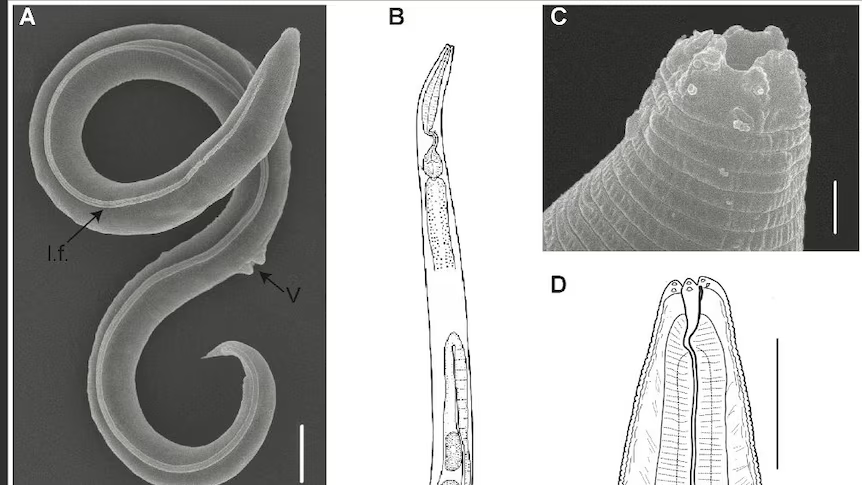Home / covid / Newly Discovered Bat Coronavirus in China Raises Global Concerns
Newly Discovered Bat Coronavirus in China Raises Global Concerns
By: My India Times
3 minutes read 46Updated At: 2025-02-24

Emerging Virus Strain from Bats Sparks Fear of Potential Outbreak
Scientists at China’s Wuhan Institute of Virology have recently identified a novel bat coronavirus, HKU5-CoV-2, that has the potential to infect human cells using the ACE2 receptor. This finding has rekindled international debates regarding the threats posed by zoonotic viruses—pathogens that transfer from animals to humans. While no human infections have been documented thus far, this disclosure led to a notable increase in the stock prices of vaccine manufacturers, reflecting a widespread concern regarding the potential for future pandemics. The emergence of infectious diseases originating from wildlife has consistently posed a risk throughout history, from the bubonic plague to HIV and COVID-19.
The persistent risks are intensified by human activities such as deforestation, urban development, intensive livestock farming, and climate change, which facilitate new opportunities for harmful pathogens to transfer from animals to humans. While medical advancements have equipped us with tools to combat such diseases, contemporary ecological disruptions are accelerating the emergence of novel viruses.
HKU5-CoV-2: A New Threat With Alarming Potential
Researchers discovered the HKU5-CoV-2 strain in Pipistrellus bats sampled across several Chinese provinces, including Guangdong, Fujian, Zhejiang, Anhui, and Guangxi. Genetic analysis indicates that this virus belongs to a unique lineage related to Middle East respiratory syndrome (MERS), rather than SARS-CoV-2, which caused the Covid-19 pandemic. However, the ability of HKU5-CoV-2 to bind to the human ACE2 receptor—the same mechanism used by SARS-CoV-2—raises concerns about its potential to infect humans.
What makes this virus even more concerning is its ability to infect a broad spectrum of mammalian species, as shown in laboratory experiments. The capacity for cross-species transmission increases the likelihood of mutations that could enhance its ability to spread among humans. Such viral adaptability has been a hallmark of previous pandemics, making it essential to monitor HKU5-CoV-2 closely.
The Role of Wuhan’s Virology Institute and Scientific Investigations
Leading this research is Shi Zheng-Li, a virologist renowned for her studies on bat-borne coronaviruses. Her work has been instrumental in identifying potential pandemic threats originating from wildlife. However, her laboratory has also faced scrutiny and speculation regarding its possible involvement in the emergence of SARS-CoV-2. These allegations have sparked debates about lab safety and research ethics, further intensifying the global spotlight on Wuhan’s virology research.
Despite controversies, the discovery of HKU5-CoV-2 underscores the importance of proactive surveillance and research in preventing future pandemics. Identifying and studying such viruses before they pose a direct human threat is crucial for pandemic preparedness. Scientists worldwide are calling for increased collaboration, transparent research, and enhanced biosafety measures to mitigate the risks of emerging infectious diseases.
Why Are Emerging Zoonotic Viruses Becoming More Frequent?
Zoonotic viruses—those that originate in animals and jump to humans—are becoming more frequent due to rapid changes in ecosystems. Deforestation, urban sprawl, and wildlife habitat destruction force animals and humans into closer contact, creating opportunities for viruses to cross species barriers. Industrial-scale agriculture, particularly in poultry and livestock farming, further amplifies the risks by enabling viruses to mutate and spread more efficiently.
Climate change is another factor fueling the rise of emerging diseases. Shifting weather patterns affect animal migration and virus transmission dynamics, increasing the likelihood of new pathogens infecting humans. The accelerating rate of global travel also means that an outbreak in one region can quickly escalate into a worldwide crisis.
Global Response: Preventing the Next Pandemic
Given the ever-present threat of emerging viruses, global health organizations are emphasizing the need for a proactive approach. Strengthening disease surveillance, enhancing early detection systems, and investing in rapid vaccine development are essential strategies to mitigate future outbreaks. Scientists are also urging governments to regulate wildlife trade and improve biosecurity measures in high-risk areas to minimize human-animal contact.
International collaboration between researchers, policymakers, and public health agencies will be critical in combating emerging zoonotic threats. The lessons from past pandemics should serve as a wake-up call, driving stronger preparedness measures and ensuring that humanity remains one step ahead of the next potential outbreak.
....
Emerging Virus Strain from Bats Sparks Fear of Potential Outbreak
Scientists at China’s Wuhan Institute of Virology have recently identified a novel bat coronavirus, HKU5-CoV-2, that has the potential to infect human cells using the ACE2 receptor. This finding has rekindled international debates regarding the threats posed by zoonotic viruses—pathogens that transfer from animals to humans. While no human infections have been documented thus far, this disclosure led to a notable increase in the stock prices of vaccine manufacturers, reflecting a widespread concern regarding the potential for future pandemics. The emergence of infectious diseases originating from wildlife has consistently posed a risk throughout history, from the bubonic plague to HIV and COVID-19.
The persistent risks are intensified by human activities such as deforestation, urban development, intensive livestock farming, and climate change, which facilitate new opportunities for harmful pathogens to transfer from animals to humans. While medical advancements have equipped us with tools to combat such diseases, contemporary ecological disruptions are accelerating the emergence of novel viruses.
HKU5-CoV-2: A New Threat With Alarming Potential
Researchers discovered the HKU5-CoV-2 strain in Pipistrellus bats sampled across several Chinese provinces, including Guangdong, Fujian, Zhejiang, Anhui, and Guangxi. Genetic analysis indicates that this virus belongs to a unique lineage related to Middle East respiratory syndrome (MERS), rather than SARS-CoV-2, which caused the Covid-19 pandemic. However, the ability of HKU5-CoV-2 to bind to the human ACE2 receptor—the same mechanism used by SARS-CoV-2—raises concerns about its potential to infect humans.
What makes this virus even more concerning is its ability to infect a broad spectrum of mammalian species, as shown in laboratory experiments. The capacity for cross-species transmission increases the likelihood of mutations that could enhance its ability to spread among humans. Such viral adaptability has been a hallmark of previous pandemics, making it essential to monitor HKU5-CoV-2 closely.
The Role of Wuhan’s Virology Institute and Scientific Investigations
Leading this research is Shi Zheng-Li, a virologist renowned for her studies on bat-borne coronaviruses. Her work has been instrumental in identifying potential pandemic threats originating from wildlife. However, her laboratory has also faced scrutiny and speculation regarding its possible involvement in the emergence of SARS-CoV-2. These allegations have sparked debates about lab safety and research ethics, further intensifying the global spotlight on Wuhan’s virology research.
Despite controversies, the discovery of HKU5-CoV-2 underscores the importance of proactive surveillance and research in preventing future pandemics. Identifying and studying such viruses before they pose a direct human threat is crucial for pandemic preparedness. Scientists worldwide are calling for increased collaboration, transparent research, and enhanced biosafety measures to mitigate the risks of emerging infectious diseases.
Why Are Emerging Zoonotic Viruses Becoming More Frequent?
Zoonotic viruses—those that originate in animals and jump to humans—are becoming more frequent due to rapid changes in ecosystems. Deforestation, urban sprawl, and wildlife habitat destruction force animals and humans into closer contact, creating opportunities for viruses to cross species barriers. Industrial-scale agriculture, particularly in poultry and livestock farming, further amplifies the risks by enabling viruses to mutate and spread more efficiently.
Climate change is another factor fueling the rise of emerging diseases. Shifting weather patterns affect animal migration and virus transmission dynamics, increasing the likelihood of new pathogens infecting humans. The accelerating rate of global travel also means that an outbreak in one region can quickly escalate into a worldwide crisis.
Global Response: Preventing the Next Pandemic
Given the ever-present threat of emerging viruses, global health organizations are emphasizing the need for a proactive approach. Strengthening disease surveillance, enhancing early detection systems, and investing in rapid vaccine development are essential strategies to mitigate future outbreaks. Scientists are also urging governments to regulate wildlife trade and improve biosecurity measures in high-risk areas to minimize human-animal contact.
International collaboration between researchers, policymakers, and public health agencies will be critical in combating emerging zoonotic threats. The lessons from past pandemics should serve as a wake-up call, driving stronger preparedness measures and ensuring that humanity remains one step ahead of the next potential outbreak.
By: My India Times
Updated At: 2025-02-24
Tags: covid News | My India Times News | Trending News | Travel News
Join our WhatsApp Channel
















-outbreak in-china.jpg)



























































































.png)
 (1).png)























